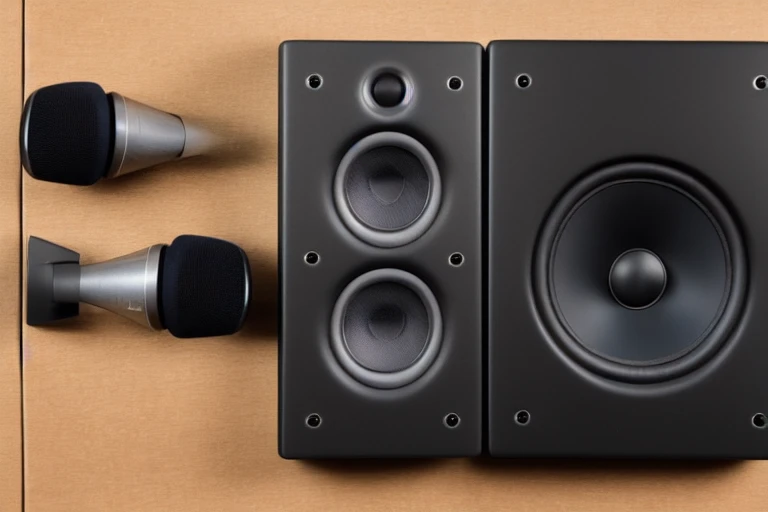If you’re recording audio at home, it’s important to get professional-quality results. Here are 5 simple tips to help you get great-sounding audio from your home studio.
Invest in good equipment
When it comes to getting professional audio from your home studio, there are a few key pieces of equipment you’ll need to make the most of your recordings.
First and foremost, you’ll need a good audio interface. This is a device that allows you to connect your audio sources (like your guitar or microphone) directly to your computer, allowing you to record and produce professional-grade audio with ease.
Another key piece of equipment is a good microphone. A good microphone will capture sound more accurately and will give you better results when recording vocals or acoustic instruments.
Finally, you’ll need a good computer. A good computer will allow you to record and produce high-quality audio files, as well as edit and mix them together easily.
Use proper technique
When you’re looking to produce professional-quality audio, it’s important to use the proper technique. Here are five tips for getting great sound from your home studio:
- Use a good recording microphone. A high-quality mic will give you better results than a cheap one, and there are plenty of great options available at both affordable and high-end prices.
- Choose a room with good acoustics. You’ll get better results if your recordings sound natural and realistic, so make sure the room where you’re making the recordings is well-maintained and has good acoustic properties.
- Take care when editing sounds. Editing sounds can be tricky – make sure to take care when selecting levels, EQs, etc., as improper edits can really damage your audio quality!
- Make use of software effects pedals and processors to enhance and improve your audio quality further. Many popular music production programs include built-in effects plugins that can help polish up your tracks prior to export or online streaming – have a look at what’s available before choosing which ones to use!
- Finally, keep in mind that even with the best equipment and techniques possible, some things just don’t lend themselves well to being digitally recorded (eccentric piano sounds come to mind!). If you need something that’s not easily captured in digital form (like live orchestral recordings), consider hiring an Audio Engineer for help – they know how to capture those elusive nuances perfectly!

Create a conducive environment
Creating a conducive environment for audio production is essential for getting the best results. Make sure your studio is well-lit and has plenty of space to move around in. Make sure the room is temperature-controlled and free from distractions. And finally, make sure your audio equipment is of the highest quality.

Eliminate distractions
When you’re working in your home studio, it’s important to eliminate all distractions. This means turning off all electronics and shutting out any noise from the outside world. If you can, try to work in a quiet environment free of any distractions.
Another way to get professional audio is to use a recording device that’s specifically designed for audio production. These devices typically have better sound quality than your average microphone, and they’re also more portable.
If you don’t have access to a recording device, you can still produce professional-sounding audio by using software that’s designed for audio production.

Take breaks
When you’re working on a project, it’s important to take breaks so that your mind can refresh and you can come back with fresh ideas. Try to schedule regular breaks for at least 30 minutes, and even longer if you need them.
If you’re working in a noisy environment, try to take breaks in quiet areas so that you can focus. If you can’t get away from the noise, try to block out some of the background noise with headphones or an acoustic wall.
Finally, don’t forget to drink plenty of water and eat healthy snacks during your breaks so that you stay energized and focused.
Experiment
Experimenting with audio can be a fun way to get creative and create unique sounds. However, it is important to be aware of the risks involved before starting. Here are five tips for safely experimenting with audio:
- Make sure your audio equipment is in good condition. If something goes wrong, you will be able to fix it without too much trouble.
- Make sure your audio files are of high quality. If they are not, you will not be able to use them in any way and they will just waste your time.
- Be aware of the noise levels in your environment. If the noise level is too high, you will not be able to hear your audio properly.
- Be aware of the time limits that you are working with. If you run out of time, you will not be able to finish your project.
- Be aware of the possible consequences of your actions. If you make a mistake, it may not be possible to undo it and your project may end up being ruined.

Have fun
So you want to get professional-sounding audio from your home studio, but aren’t sure how? Relax! This guide will show you five simple tips for getting great sound.
If you follow these simple tips, you’ll be well on your way to getting professional audio from your home studio. But don’t stop there – keep exploring and experimenting to find new ways to improve your sound. And be sure to check out our other content for more tips and tricks.


